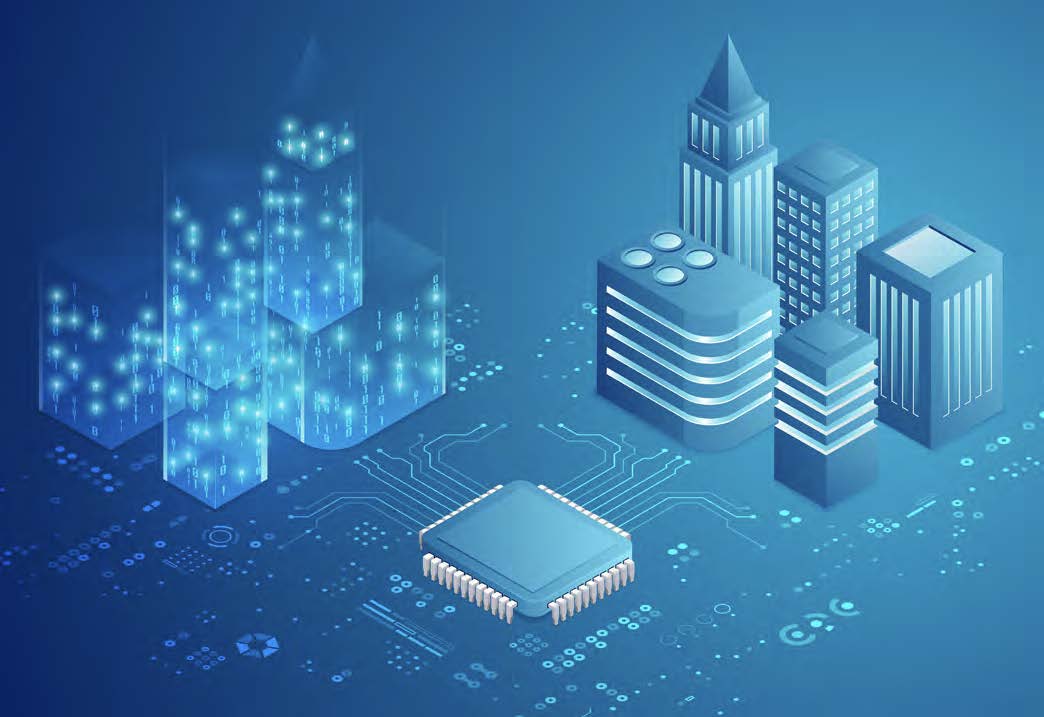One of the key findings from a recently released report on Spatial Digital Twins by the World Geospatial Industry Council (WGIC) is that “the use of spatial data can unlock value and enable increased usability of almost all Digital Twins.”
1. What are Digital Twins?
A Digital Twin is a dynamic, digital replica of a physical object, process, or system. Digital Twins provide real-time status and performance monitoring from sensors and observations. These aid in decision-making processes and provides planning and predictive capabilities.
Thus, Digital Twin Technology implementations are not about creating high-resolution 3D models. They are about creating an evolving, virtual representation of an object or process. Digital Twins consist of the data and observations from their physical counterparts.[i] These real-time data flows help analyze, simulate and study the physical object.
2. What are The Benefits of Digital Twins?
Digital Twin benefits architecture, engineering, construction, asset management, and manufacturing industries.
Below are a few benefits identified by the WGIC report on Digital Twin Technology:
- Enabling owners and decision-makers to simulate and model performance in varying scenarios
- Predicting outcomes with higher certainty
- Identifying and analyzing issues for upkeep
- Updating and upgrading physical items or assets
- Unlocking latent value from systems, processes, technologies, and people.
These benefits are independent of the size and scale of the asset, ecosystem, or processes.
3. Why do We See an Increased Uptake in Digital Twins?
Reduction in the costs of sensory devices[ii] used for data capture (e.g., Internet of Things) and technological advances expanded the interest, application, and breadth of use cases. We now see the maturing of the technology ecosystem through the availability of products, platforms, and services for Digital Twins – an essential need for evolving the Digital Twin ecosystem.
Further, the stakeholders in the Digital Twin ecosystem also realize the benefits of Digital Twins that provide an improved understanding of the performance of physical assets and systems, leading to:
- An increase in productivity
- More informed decision-making
- Prediction of outcomes with greater certainty
- Improvements through better visual interaction.
Digital Twins serve a wide variety of organizational needs and public interests. For this reason, we will see increased interest among public authorities and governmental and multilateral agencies in the funding and development of Digital Twins.
4. What Attributes Spatially Enable Digital Twins?
The simple and correct answer is accurate sensor positions and componentry. Most Digital Twins include the precise location and relative dimensions of the physical objects they are replicating in their virtual representations. These two key elements unlock the possibility to create visualizations and draw insights that are not possible from 2D plans or 3D models. Spatial data upgrades Digital Twins to the point that makes them successors of Digital Engineering and Building Information Modeling (BIM).

The specific spatial context included in Digital Twins provides a more holistic dimensional and location-based representation of assets, infrastructure, and systems. This refers to much more than the built- environment and exists at various levels of accuracy, detail, and aggregation. They can cover buildings, clusters of buildings or other infrastructure, entire networks, cities, countries, and even the globe.
Here are three key findings from WGIC’s report on Spatial Digital Twins.
- All advanced Digital Twin use-cases rely on spatial data (Spatial Digital Twins).
- Geospatial data is fundamental to unlocking more applications from existing or individual Digital Twin ecosystems.
- The geospatial industry’s spatial data capture services can enable improved visualization with low-cost alternatives.
Geospatial technologies unlock additional applications that enable isolated systems to be aggregated into regional and global ecosystems. The level of visualization provided by geospatial technology allows higher quality interaction with the digital replica. This visualization capability opens up new insights previously impossible to deduce consistently from analytics alone.

5. What are the Potential Benefits of Spatial Digital Twins?
Spatial data enables increased usability of almost all Digital Twins. A more comprehensive understanding of the benefits gained by spatial data within the Digital Twin ecosystem provides additional value, applications, and ease of visualization. WGIC has identified the following benefits:
- Reduced risk and optimization across lifecycle management
- Increased transparency and uplifted stakeholder participation
- Improved return on investment and increased breadth of application of the Digital Twin ecosystems
- Greater adoption, aggregation, and scalability of Digital Twin ecosystems
- Better socioeconomic outcomes.
6. How can Geospatial Data Minimize Uncertainty with Digital Twins?
Weather forecasting, crisis management, real-time asset conditioning, and emergency prediction are just a few examples where geospatial data helps minimize uncertainty.
Digital Twins’ applications help forecast, simulate and predict emergency impacts to support mitigation and control. They can provide real-time asset conditioning and improvements to maintenance routines and temporal analysis of changes (including environmental) through monitoring capabilities. These and many more benefits from Digital Twins and broader use of spatial data help in more informed decision-making and predict outcomes with higher certainty.
As with all emerging technologies, Gartner’s Hype Cycle[iii] demonstrates the maturity and evolution of technologies, from inception to normalization, for which Digital Twins are not immune.

With the ‘technological push’ of Digital Twins via automotive, aerospace, and manufacturing applications now entering the trough of disillusionment (as of August 2021), the time spent in this phase of the ‘Hype Cycle’ must be minimized.
By leveraging geospatial data to create an ‘applications pull’ that encourages broader use-cases, we can derive more value from Digital Twins than initially perceived[iv].
WGIC’s recently released report entitled ‘Spatial Digital Twins: Global Status, Opportunities and Way Forward’ focuses on the value delivered by the geospatial industry to drive applications, adoption, and benefits from Digital Twins. The report provides insights, recommendations, and policy considerations to help key stakeholders in the geospatial sector succeed with Spatial Digital Twin initiatives and projects. You may access the report here.
[i] https://www.ibm.com/in-en/topics/what-is-a-digital-twin
[ii] https://www2.deloitte.com/us/en/insights/focus/tech-trends/2020/digital-twin-applications-bridging-the-physical-and-digital.html
[iii] https://www.gartner.com/en/information-technology/glossary/hype-cycle
[iv] [WGIC Research] Based on revenues alone, the Digital Twin economic market is already beginning to generate more revenue outside manufacturing (as demonstrated by Juniper Research)
The original content of the blog post is sourced from the WGIC Policy Report “Spatial Digital Twins: Global Status, Opportunities, and the Way Forward”
Editors of the blog: Margarita Dadyan, Harsha Madiraju, and Bhanu Rekha from WGIC



